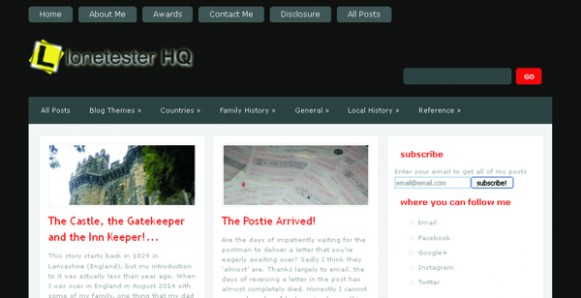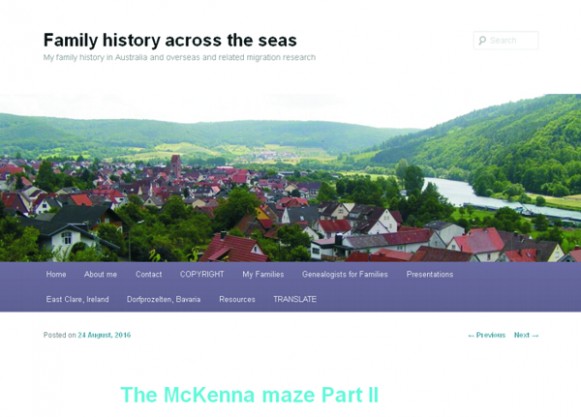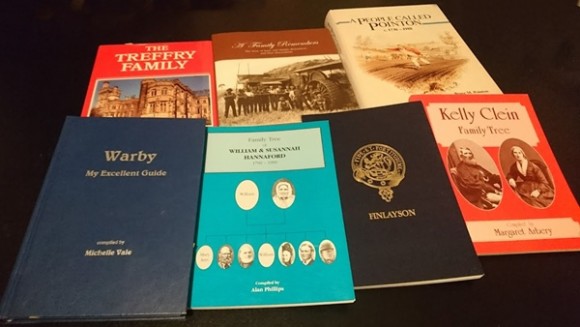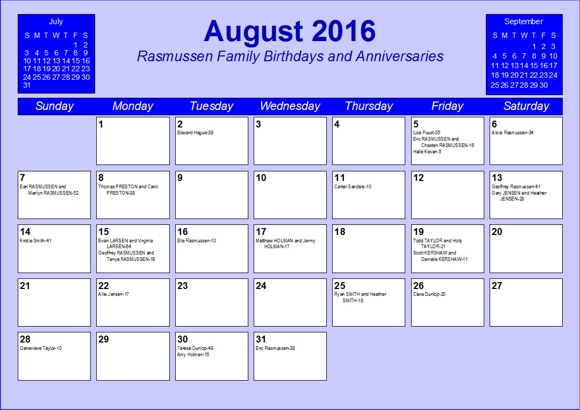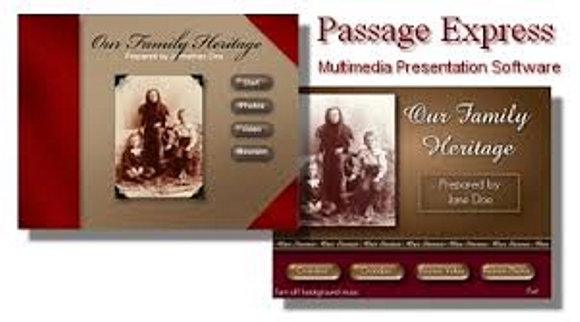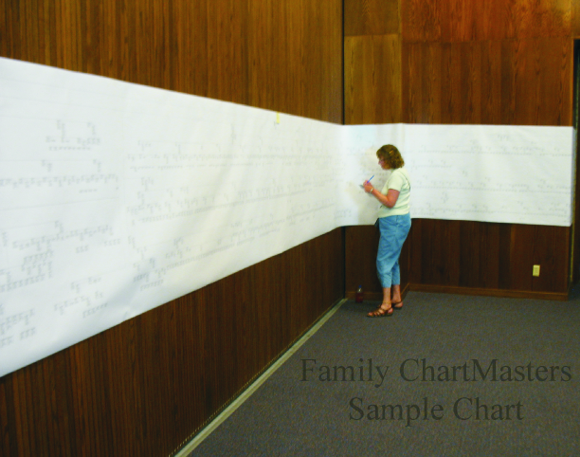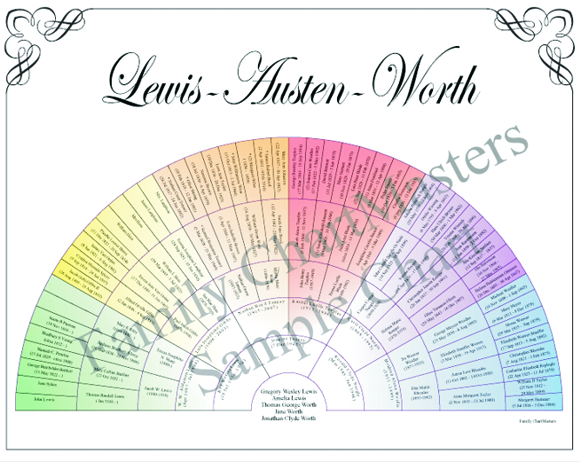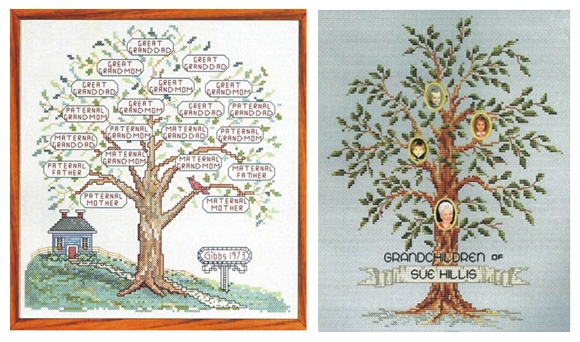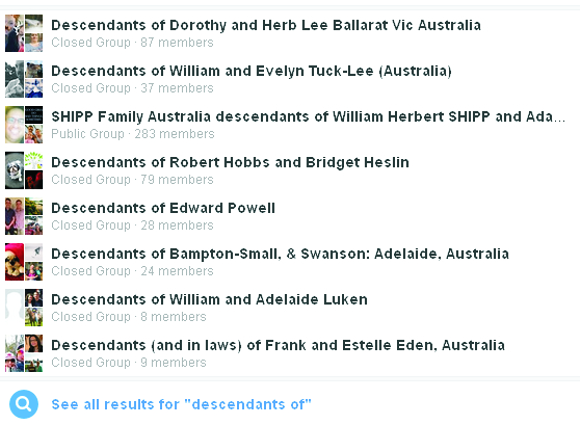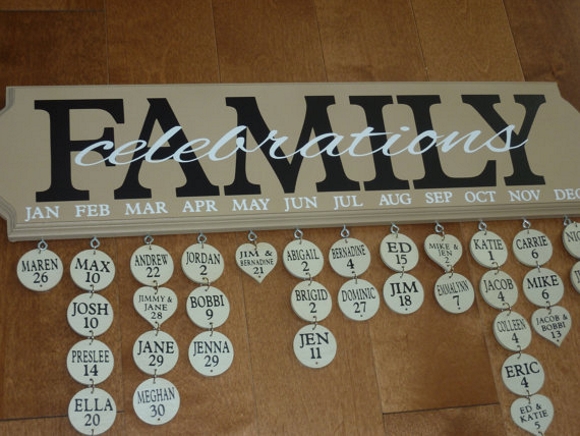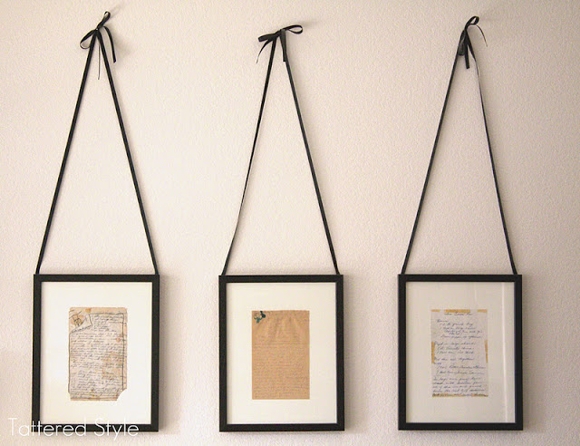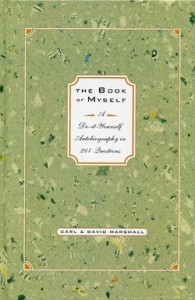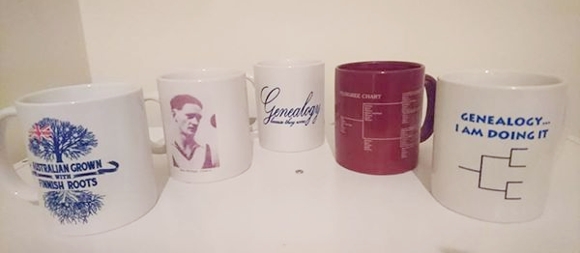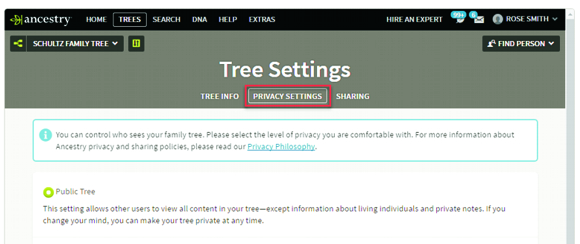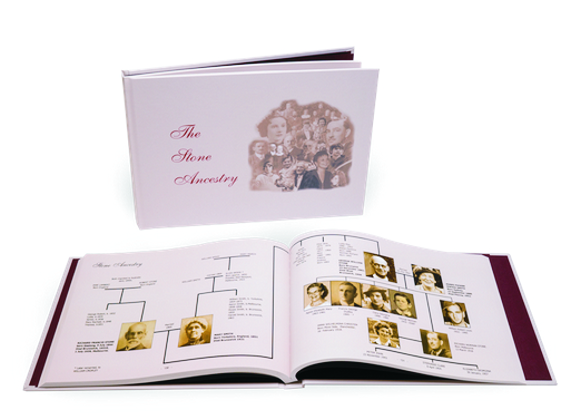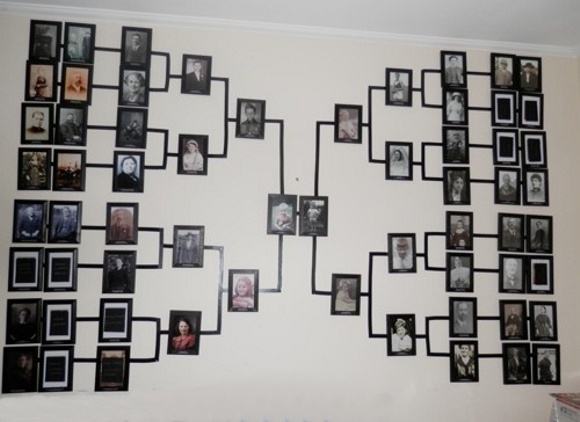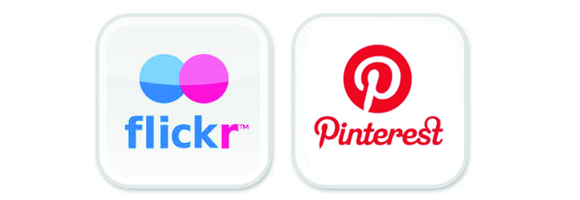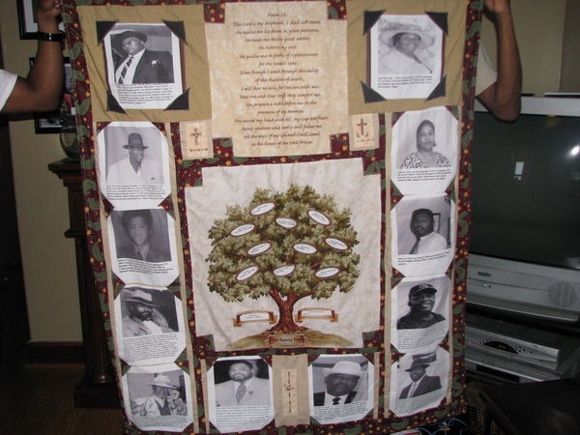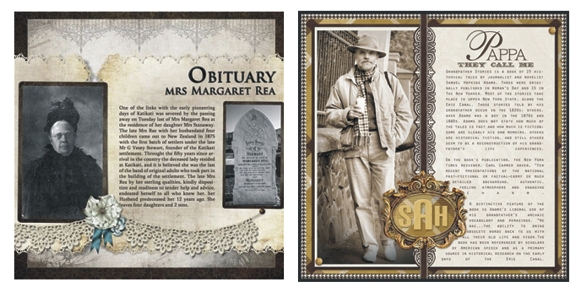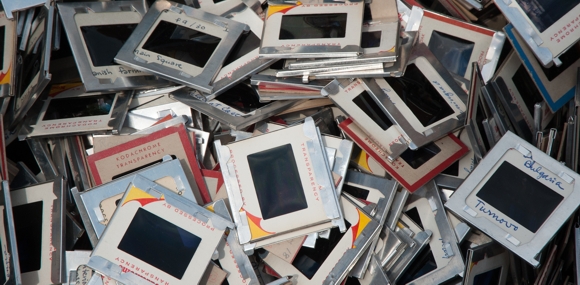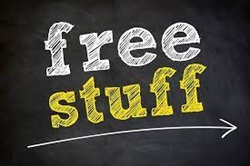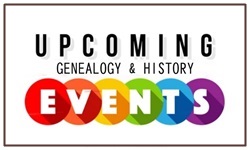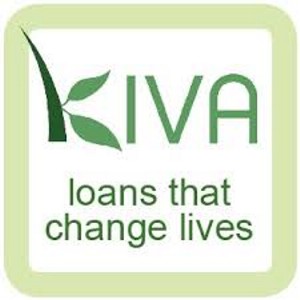“Don’t Scratch a Match on the Seat of Your Bloomers” and 46 Other Rules for Women Cyclists
The humble bicycle played an important part in women’s history, helping to redefine conventions of femininity during the women’s rights movements of the late 19th century.
“As women learned to ride bicycles they not only gained physical mobility that broadened their horizons beyond the neighborhoods in which they lived, they discovered a new-found sense of freedom of movement, a freedom previously circumscribed by the cumbersome fashions of the Victorian era as well as by Victorian sensibilities.”
But who would have thought that bike riding was such a drama for a woman back in the day!!
An article published in the Newark Daily Advocate, dated 21 July 1895, gives a list of 41 Dont’s for Women Riders, and it really has to be read to be believed!
Here’s a transcription of the list:
- Don’t be a fright.
- Don’t faint on the road.
- Don’t wear a man’s cap.
- Don’t wear tight garters.
- Don’t forget your toolbag
- Don’t attempt a “century.”
- Don’t coast. It is dangerous.
- Don’t criticise people’s “legs.”
- Don’t boast of your long rides.
- Don’t wear loud hued leggings.
- Don’t cultivate a “bicycle face.”
- Don’t refuse assistance up a hill.
- Don’t wear clothes that don’t fit.
- Don’t “talk bicycle” at the table.
- Don’t neglect a “light’s out” cry.
- Don’t wear jewelry while on a tour.
- Don’t race. Leave that to the scorchers.
- Don’t imagine everybody is looking at you.
- Don’t go to church in your bicycle costume.
- Don’t wear laced boots. They are tiresome.
- Don’t keep your mouth open on dirty roads.
- Don’t converse while in a scorching position.
- Don;t go out after dark without a male escort.
- Don’t contest the right of way with cable cars.
- Don’t wear a garden party hat with bloomers.
- Don’t wear white kid gloves. Silk is the thing.
- Don’t chew gum. Exercise your jaws in private.
- Don’t tempt fate by riding too near the curbstone.
- Don’t ask, “What do you think of my bloomers?”
- Don’t use bicycle slang. Leave that to the boys.
- Don’t discuss bloomers with every man you know.
- Don’t think you look as pretty as every fashion plate.
- Don’t go out without a needle, thread and thimble.
- Don’t allow your dear little Fido to accompany you.
- Don’t scratch a match on the seat of your bloomers.
- Don’t try to have every article of your attire “match”.
- Don’t let your golden hair be hanging down your back.
- Don’t appear in public until you have learned to ride well.
- Don’t try to ride in your brother’s clothes “to see how it feels”.
- Don’t overdo things. Let cycling be a recreation, not a labor.
- Don’t ignore the laws of the road because you are a woman.
- Don’t throw your legs over the handlebar and coast down the hill.
- Don’t scream if you meet a cow. If she sees you first, she will run.
- Don’t cultivate everything that is up to date because yon ride a wheel.
- Don’t emulate your brother’s attitude if he rides parallel with the ground.
- Don’t undertake a long ride if you are not confident of performing it easily.
- Don’t appear to be up on “records” and “record smashing”. That is sporty.
So readers, if you could transport yourself back to 1895, and you were a female bike rider back then,. how many of those rules have you broken? My hand would be up for a number of them for sure. But we’re not in 1895 … thank goodness … although if we were I could visit great great grandpa and ask … but that’s a story for another day.
The Ultimate Checklist: 79 Places to Look for Family History Information
So you’ve embarked on the super-exciting journey of family history … the journey where you discover not only who your family is and was, but in many instances yourself as well.
You’ve started off by writing down all the information that you currently know about yourself, your spouse, your children, your siblings and your parents (names, dates, places etc).
The next step is to look for items that are likely to help you with more information.
Everyone knows about the birth, death and marriage certificates as a source of information. But had you thought of looking in your baby book, on x-rays, or your drivers licence … all of these have valuable information about the person they relate to, and therefore all are sources.
So if you thought you had looked EVERYWHERE … think again. I guarantee that this checklist has at lease a few possibilities you hadn’t considered before.
Birth
___ Adoption Record
___ Baby Book
___ Birth Certificate
Marriage
___ Anniversary Announcement
___ Marriage Certificate
___ Wedding Announcement
___ Wedding Book
Divorce
___ Papers
Death
___ Death Certificate
___ Funeral Book
___ Memorial Cards
___ Obituary
___ Will
Education
___ Awards
___ Graduation
___ Honour Roll
___ Report Cards
___ Year Books
Employment
___ Achievement Awards
___ Apprenticeship Records
___ Business Cards
___ Income Tax Records
___ Membership Records
___ Resume
___ Severance Records
___ Retirement Records
Everyday Life
___ Address Books
___ Autograph Album
___ Bills
___ Birthday Book
___ Biography
___ Diary
___ Letters
___ Newspaper Clippings
___ Passport
___ Photographs
___ Scrapbooks
___ Telephone Books
Family
___ Bible
___ Bulletins/Newsletters
___ Coat of Arms
___ Genealogies
___ Histories
Health
___ Hospital Records
___ Immunisation Records
___ Insurance Papers
___ Medical Records
___ X-rays
Household Items
___ Dishes
___ Engraved Items
___ Needlework
___ Quilts
___ Silverware
___ Stitched Sampler
___ Tapestries
___ Other Heirlooms
Land and Property
___ Estate Records
___ Financial Records
___ Land Grants
___ Mortgages
___ Tax Notices
___ Title Deeds
Licences
___ Business
___ Drivers
___ Firearms
___ Occupation
___ Professional
Military Service
___ Discharge Notices
___ Medals and Awards
___ Nominal Rolls
___ Personal Service Record
___ Roll of Honour
___ Unit Histories
Religion
___ Blessing
___ Baptism Record
___ Christening Record
___ Confirmation Record
___ Ministerial Record
___ Ordination Record
So there’s 79 different types of records that can be useful for your genealogy. But note, the above doesn’t even include records for those on the wrong side of the law. When you have those in the family, there’s usually oodles of records available (depending on period, of course, and if they are not within the restricted timeframe for privacy).
25 Ways You Can Present and Share Your Family History
Let’s say for instance that you’ve started your family history. In fact, you’ve probably been doing it a while. Possibly even years. So now you’ve got all this family information … why not do something useful and creative with it?
I’m sure many of you will say ” but none of my family are interested”. I know, I’ve heard that many, many times. And my answer to that, is that it is then your job to MAKE THEM interested. Don’t just tell them the facts (the names and dates) or give them a huge pile of papers, their eyes will glaze over, and you will have put them off family history forever. So it’s a case of getting creative in HOW you present your family history.
There are many, many different ways of ‘presenting’ and sharing your research, and it really comes down to whatever works for you. It might be with just your immediate family, or it might be with the whole world. It’s entirely up to you as to who you share it with, and how you share it.
Here are 25 ideas on different ways you can present and share your family history.
1. BLOG
Blogging is one of the easiest ways to be able to share your research with the world. It’s free, you can do it when you want to, and you can do it from home. You’ve done the research, so why not tell your family (and the wider world) the stories of your ancestors. Tell them about the goldrush, the war heroes, the Depression, the struggles, life on the land, migrating or moving house, the stories of family heirlooms, family pets etc. It’s all history, and you could tell it. It’s a great way for distant cousins to ‘find’ you, and trust me it works!
2. BOOK
A traditional way of sharing your family history it to produce a book. While I’m not wanting to put anyone off doing a book, writing a family history really does take years to compile (I truly admire anyone that does one), and depending on how you produce it, the cost can easily be in the thousands of dollars to produce. But in saying that, it does leave a physical printed legacy of your research, which is a good thing.
3. CAKE
I know many of you will wonder why on earth I have ‘cake’ as a way of sharing your family history. If you (or an awesome cake making person) can create a family tree cake, and incorporate the names of your family on it, it’s bound to create interest amongst everyone there. See … so it is a way of sharing and presenting your family history! For a whole heap of awesome family tree cake ideas, just head to Google Images and type in family tree cake. Here’s just a couple I’ve chosen to show.
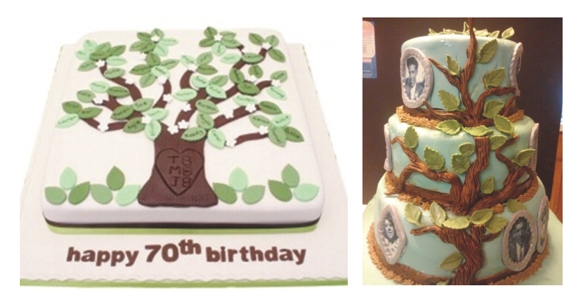
here’s just two examples of family tree cakes: the first was made by All About Cake, the second is by Cake Central
4. CALENDAR
There’s several ways you can incorporate family history into a calendar. One is to use your genealogy program’s features to see what happened ‘on this day’. Say for instance May 15th (on different years) you may have had a grandmother born, a great great uncle die, another couple or two in your family marry on that day, and so on. If you incorporate these things on to your calendar it helps you remember them and think about them in a different way. Both Legacy Family Tree and RootsMagic allow users to create a birthday/anniversary calendar with their programs.
5. CD-ROM/USB
There’s several different formats that sharing a CD or USB could take. You could have your genealogy software file on it, and simply share that with your family members – though they will need a genealogy software program to read it. You could have copies of old photos that you’ve scanned on there, and have just grouped them together on the CD/USB for your family to have. Or you could create a family presentation which includes family trees, photos, audio and video all of which can be saved on to a CD to share. Passage Express is one such add-on program that is designed to do just this. You can check it out here.
6. CHART
I’m sure we’ve all done a chart of some sort throughout our research life. But there are so many different types available, and it truly is a great way to be able to visually show someone where they fit in. They also make an awesome gift! For a listing of wall chart printers, check out this list here.
7. COPY AND POST
Let’s say you’ve been doing family history for years, and you have paper copies of everything. You could simply make copies of everything that is relevant to your newly found family member, pop it in the post and share it that way. There’s still nothing wrong with that. And it sure is exciting for the receiver (as long as they’re into family history) to see what goodies arrive when they do.
8. CROSS STITCH
This one is obviously for the cross-stitchers. For a truly unique heirloom item, why not cross-stitch your family tree? While there would be a number of craft places around that sell the kits or patterns for these, I can highly recommend Fun Stuff for Genealogists who sell some of both. You can see their range here. And for an interesting twist with cross stitch, Martha Stewart writes about creating a cross stitch family portrait here … now I like this idea!!
9. DECORATIONS
Christmas is a time for family and a time for many family traditions. And ornaments are one item that you may have inherited from your parents or even grandparents, and they ALWAYS get put up at Christmas time. Be sure to tell your family the significance and story behind the ornament. And why not create add your own touch to the tradition by creating your own ornaments with personalised Christmas baubles.
10. FACEBOOK
With so many people on Facebook, why not make use of it for genealogy too by creating a Facebook ‘group’ for your family … “Descendants of so-and-so”. There are many there already. It’s a way of being able to keep in touch, interact and share family memories and memoirs, not forgetting arranging family get-togethers.
11. FAMILY BIRTHDAY BOARD
A variant of the calendar idea, another way to use you family history in an interesting way is to create a birthday board. Online shopping website Etsy has plenty of them for sale. You simply write the names and dates on each tag, and hang in the appropriate month, in the appropriate order.
12. FRAMING
Simply using old (or copies of old) letters, recipes or even certificates put into frames on a wall is a way of bringing a piece of your family history into the family. Not to mention that it’s a conversation starter too. Dana from the Tattered Style blog not only shows you how to preserve a precious old family recipe, but also how to make it into a work of art. And Kimberley Whitman writes about framing her grandmother’s old love letters here. Again … another awesome idea, and bound to create family interest.
13. GAMES
Games are one way that you could get the younger generation interested. Be it computer games, card games, or board games, family tree games are out there – even ideas on how to create your own, DIY Ancestor Card Game Tutorial. Here are links to a couple that you can try with the kids in your family. The easiest way of finding family tree games is to google it! But here’s a link to one great online ‘detective‘ one for kids though, and there’s a game called Six Generations which has a Zazzle store which you might ind interesting too.
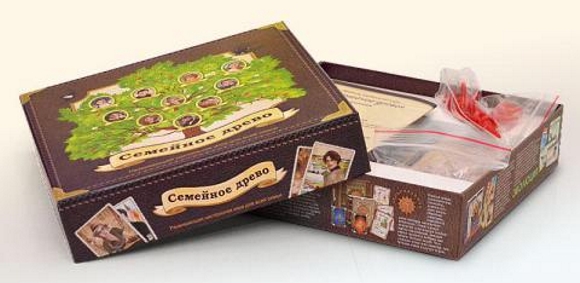
the Family Tree Game sounds interesting
14. MEMOIR
When we think of family history we think of the many generations before us … but too many forget that one of the best things they can do is to write your own story. No-one knows your own history as well as you. So writing your own memoir is a way of leaving something for the future generations. It’s doesn’t have to be in a full book format, it could be random notes of things you think of at any time of the day or night and jot down. Or it could be following a series of questions, that you simply fill in the answers. Anything you write will be something for the generations to remember you by, and more than likely will be tidbits that they never knew about. A really good (and easy) book the get is one called The Book of Myself: A Do-it-Yourself Autobiography in 201 Questions. Each page has a question at the top, and you have the rest of the page to fill in.
15. MUGS
It’s a novelty idea, but why not. There’s plenty of places that will print a custom image on a mug these days. From actual family trees to humorous family tree quotes – they’re all there. For a range of them click here. The photo below shows some of my genealogy-related mugs. The second one from the left is a commemorative one with a picture of my grandpa on it. He was a footballer back in the day, and won numerous prestigious awards. This was a mug commemorating those from his club who won it – so it is a piece of history on a mug!
16. ONLINE TREE
If you’re not adverse to having your tree online, you can put it up there, and share it with the world by having it public, or you can have a private tree and choose who you allow to view it. Ancestry, Findmypast, MyHeritage, FamilySearch Family Tree, TheGenealogist and Geni are the big names in the online tree world, but there are many more. I suggest before putting your tree online anywhere, be sure to read the fine print of their terms and conditions, so you know what you’re getting into. In saying that, having you tree online and public is basically a way of cousin-baiting. You’re put your tree out there, people search for a name, and they find your tree so get in touch (hopefully).
17. PHOTOBOOK
If you’re not up for writing a book, but do have a whole heap of old family photos you’d like to share with the wider family, another method of sharing is to create a photobook. Simply the company you wish to go with, download their template software, choose your template, load in your already scanned photos and add captions, and text and/or tree and hit the send button and your book will be printed and posted out to you. There are numerous photobook companies around: Momento, Snapfish, Photobook Australia, Blurb to name a few. A perfect book to have on offer at a reunion, or afterwards if you wish to record the reunion gathering itself.
18. PHOTO WALL
If you’re lucky enough to have photos of your ancestors, why not put them on display? It’s a way a remembering who they are as well as creating family interest. Here are links to my posts about my own photo wall Part 1 and Part 2. For more photo wall ideas click here.
19. PINTEREST AND FLICKR
I’ll admit that I’m not really into Pinterest Flickr in a big way, but I know that many are – so it deserves a mention. Flickr is an website that allows you to upload photos which you can then group into albums, you can have them as public or private and share albums too. With over 13 billion photos uploaded there, there’s bound to be some of interest, either people, places or occupations. As an example I typed in “family history” in the search on Flickr and 488,780 public photos came up. Impressed! You should be. It’s a way of getting your old family photos out there, and sharing with your wider family.
Now on to Pinterest, for those unfamiliar with the concept of it, think of it like have a bunch of pinboards. And you ‘pin’ different things on each. Family history stuff on one or two, other boards for other interests. You can follow other pinners, and repin what they have on your board. Following? Here’s one pinner that has an enormous amount of family history related pins on their various boards. But simply type in “family history” or “genealogy” in the search box on Pinterest and you’ll find 100s there. If you’re into (or getting into) Pinterest, you might like to have different boards for different family groups and scan and upload copies of old documents relevant to each. Just another idea on how to share.
20. QUILTING
Again, another one for the crafters. Creating an heirloom item like a quilt with special family significance would make the ultimate gift. A lot of love and effort goes into one of these, not to mention the memories as well. Once again googling for “family history quilt” comes up a whole host of quilt styles – some like the one below have a traditional style tree and have photos incorporated into it, others family members handprints or signatures, another I saw was using family members old ties! It’s entirely up to you how you choose to ‘record your family and family heritage ‘. As a suggestion also google for “memory quilt” as that comes up more interesting ideas. The step-by-step instructions for the quilt below are listed on the Quilting Board.
and here’s a video of a family tree quilt being worked on
https://youtu.be/WbwE0quJY-Y
21. REUNION
Another idea is to hold a family reunion. It can be big or it can be small. Either way it’s a get-together of people connected. Think about it, how often do you see your aunts, uncles and first cousins? What about your second-cousins? It’s another way to be able to share what knowledge (and maybe memorabilia) you have of the family, with others. Not sure how to go about holding a reunion, there’s numerous helps available. Click here to have a read online, and here are some books that cover this very topic.
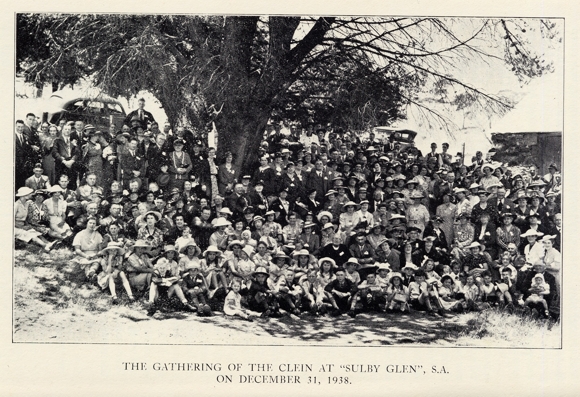
The Kelly Family Reunion, South Australia, 1938. 300 of the 400 descendants of the original emigrants were at this reunion
22. SCRAPBOOK
Scrapbooking and genealogy certainly go together. First you do the research, then you can create beautiful heritage pages or albums showing off your research. What you come up with is only limited by your imagination. It s a perfect way to create some interest, and tell the stories of you ancestors. For a whole bunch of family tree and heritage themed scrapbooking papers and associated products check out Gould Genealogy and also Scrapbook.com. For more layout ideas, click here.
23. SLIDE NIGHT
We all have slides don’t we? So why not dig out the old slide projector, and have a slide night? It’s most certainly one way to get the family talking about their memories of places and events. If you don’t have a slide projector (or one that works), you might like to get your slides scanned, and then you can view them on your computer. Just look for a place that does film and slide duplication. One in Australia that does this is Big Egg Media. Don’t leave your slides sitting in their boxes forever. Get them out, get them looked, and get them shared with your family.
24. TATTOO
Again I’m guessing you’re wondering why this is in this list. While it’s not your standard way of ‘sharing’ your tree, it is one that you can do. And there are plenty of examples of family tree tattoos available, just have a look here.
25. VIDEO
Creating a video presentation is a really interesting way of sharing your family history with others. You might create it, and simply share it with your immediate family, or you might choose to upload it to YouTube as some do. The video below is a great example of a family tree video. And here are two others: sample 2, sample 3. While I’m talking about videos and YouTube here’s a tip: you’ll also find a lot of home movies on YouTube, so it’s always worth searching to see what you can find for your families or the region/town they were from.
“What are you doing with your genealogy”
– Amy Johnson Crow
17 Websites to Find Photos for Your Blog
From time to time I write a non-genealogy related post. One more general. This is one of those. But all of the links listed below are useful for not just regular bloggers, but they can certainly be used for those who are geneablogging as well.
I have always believed that graphics in blog posts are important. And when you read the “what makes a good blog post” type articles, photographs and images always seem to get a mention, so I’m not the only one.
Over the years I have been asked where do you get the images that I use on my blog, and the simple answer is I use BigStock which you do have to pay for, but it is low-cost compared to some.
But there are other valuable resources out there that you can use, so I thought I’d introduce you to some of them. Many are free free stock photo sites, with a few pay stock photo sites listed as well.
It kind of goes without saying that you MUST read the terms of use on each site, because each is different. Some are free without any attribution needed, some require attribution. Some allow you to alter the image, and others don’t. Some are available for personal use only, but not commercial. Others are fine for either use. So be aware, read the licence.
———————————————–
BigStock – $
www.bigstockphoto.com
BigStock (formerly BigStockPhoto) offers users over 35 million royalty-free photographs and images. They are available to download in various sizes and various file formats, and are available for individuals and commercial organisations. BigStock is a pay site, and you can pay per month, or buy credits. I use the credit method, and just purchase a batch of credits which last a year. Each photo costs a certain number of credits (between 1 and 6 depending on the size and format 2 or 3), and I find enough choice for what I need. You can try BigStock free for 7 days, and download up to 35 royalty-free images during that time.
British Library Images Online – $
https://imagesonline.bl.uk
Images Online is the picture library of the British Library, UKs national library. This site allows you to search, and ‘buy’ pictures online, which are sent to you as downloads. A totally unique collection with thousands of images available.
Flickr – free
https://www.flickr.com
Flickr is used by many of the world’s largest libraries and cultural organisations as a place to share images after determining that “no known copyright restrictions” exist. You’ll find millions of images from 100s of institutions on Flickr. Just a few are the Australian War Memorial (AWM), the National Library of Australia (NLA), LINC Tasmania, NASA, the Smithsonian Institution, the British Library, the Public Record Office of Northern Ireland (PRONI), and more from Australia, the US, Canada, France, Scandinavian countries and elsewhere.
Getty Images – $
http://www.gettyimages.com.au
Getty Images is another pay site. Costs of the images vary according to the chosen resolution and type of rights associated with each image, and they claim to have 80 million images that you can search from.
Gratisography – free
http://www.gratisography.com
This site is a website created and run by Ryan McGuire, and offers free high-resolution photographs that you can use on your personal and commercial projects, with new pictures added weekly! All photographs are taken by Ryan, and are free from copyright restrictions.
Imgion – free
http://www.imgion.com
“On Imgion we provide free images on large topics to share with your friends and on your blogs.” This is a good site to find modern photographs, but just don’t expect to find millions of images like you get on some other sites.
Morguefile – free
http://morguefile.com
Morguefile is a free photo archive “for creatives, by creatives.” The site was created to serve as a free image exchange for creative professionals and teachers to use in their work. A community-based free photo site, all photos found on Morguefile free for you to download and re-use in your work, be it commercial or not. The photos have been contributed by a wide range of creatives from around the world, ranging from amateur photo hobbyists to professionals. Be sure to check licencing for attribution requirements.
New Old Stock – free
http://nos.twnsnd.co
The paragraph below the title of this website describes it as “Vintage photos from the public archives. Free of known copyright restrictions. Recapturing History.” And all photos photos on this site “are at the very least available for personal and non-commercial use”.
Pexels – free
https://www.pexels.com
Pexels keeps it simple. All photos on Pexels are free for any personal and commercial purpose. They can be used as is, or altered, and no need for attribution is required. They also add 50 new stock photos each day. One to check out if you haven’t before.
Pixabay – free
https://pixabay.com
Pixabay isn’t one I’ve used yet, but it was recommended by a fellow geneablogger, and is now on my list of places to check out. Their website says … “on Pixabay you may find and share images free of copyrights. All pictures are released under Creative Commons CC0 into the public domain. You can copy, modify, distribute, and use the images, even for commercial purposes, all without asking permission and without paying attribution.” And they have over 640,000 of them. So definitely one to check out.
Public Domain Archive – free
http://publicdomainarchive.com
The Public Domain Archive offers users new free photos each week, or you can pay $10 a month and get unlimited downloads from their site. The photos you’ll find on their website are modern, but stunning.
Shutterstock – $
http://www.shutterstock.com
Shutterstock is the world’s largest subscription based images site with over 80 million images. It is a pay per image site, they also have one image available for free download each week – so if you remember, this is a great way to build up a collection of images for free.
TheGenealogist Image Archive – free/$
http://www.thegenealogist.co.uk/imagearchive
With thousands of vintage photos this is a great place to look for images relating to places and topics/occupations in England. While TheGenealogist’s Image Archive is available for everyone to search for free and it allows you a small low-res image, if you want a hi-res one you will need to be a Diamond Subscriber to TheGenealogist website.
The Old Design Shop – free
http://olddesignshop.com
This is a treasure trove for vintage images. Here you’ll find free clipart graphics and vintage images that come from a variety of public domain sources, as well as magazines, textbooks, calendars, label art, postcards, greeting cards and ephemera. These graphic images are in .jpg format and are available for download. You may use the free clipart images for personal projects or to sell artwork you have created. If using images on a blog or website, a link back or credit to this site is required.
Vintage Stock Photos – $
http://www.vintagestockphotos.com
A pay-per-image site, that offers royalty-free retro and mid-century stock images from the 1950s, 1960s and 1970s. Not a vast quantity of images, but they are good quality ones.
Wellcome Images – free
http://wellcomeimages.org
Wellcome Images is one of the world’s most unique collections, specialising in the medical and social history themes. You can explore over 170,000 historical and contemporary images on their website. All available to download free for personal, non-commercial use.
Wikimedia Commons – free
https://commons.wikimedia.org
Wikimedia Commons is a database of over 31 million “freely usable media files to which anyone can contribute”. While this site says “freely useable” be sure to check the licencing, as the images are uploaded by individuals, so licencing can vary from image to image.
———————————————–
I know this isn’t all of the stock photo sites out there. In fact there’s hundreds. If you use something different, feel free to leave a comment below and let others know what you use and how you find it.


